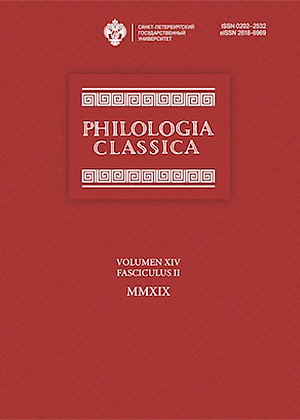Successive Similes in Valerius Flaccus’ Argonautica 4. 682–688
DOI:
https://doi.org/10.21638/11701/spbu20.2019.211Аннотация
This article tackles a string of similes in Valerius Flaccus’ Argonautica 4. 682–688. To secure the possible sources of what seems to be a successive simile, I discuss the semantic complexity of the expression detorquet in ilia, the syntactic function of invito and cornu, and the problem of interpretation of Vulcanius ardor. Building on several scholars’ opinions on the meaning of detorquet in ilia and coercere (v. 683) I suggest that there are two successive actions to this simile: a man tames the bull and then yokes a pair of them; accordingly, ilia stands for the man’s, not the bull’s groin. Invito cornu is taken as an ablative of means. An overview of scholarly opinion on the interpretation of Vulcanius ardor allows it to conjecture that it is the work going on in Vulcan’s forge, the activity resulting in waves and roar. The list of possible sources of the second simile is supplemented by the passage from the Aeneid, 3. 554–557. The phenomenon of successive similes is absent in Virgil’s Aeneid, but can be found in Homer’s Iliad (8. 455–483). By contriving such strings Valerius Flaccus refers both to Homer and further develops this technique in his own way.
Ключевые слова:
Roman epic poetry, Valerius Flaccus, Argonautica, successive similes
Скачивания
Библиографические ссылки
Загрузки
Опубликован
Как цитировать
Выпуск
Раздел
Лицензия
Статьи журнала «Philologia Classica» находятся в открытом доступе и распространяются в соответствии с условиями Лицензионного Договора с Санкт-Петербургским государственным университетом, который бесплатно предоставляет авторам неограниченное распространение и самостоятельное архивирование.






